1983: “Surprise” snowstorm covers east central Minnesota. The Twin Cities measured 13.6 inches. Brilliant blue skies and bright sun the morning after.
1886: St. Cloud-Sauk Rapids tornado. It left 72 people dead. 80 percent of all buildings in Sauk Rapids were leveled as the tornado expanded to 800 yards across. When it crossed the Mississippi it knocked down two iron spans of a wagon bridge and local witnesses said the river was “swept dry” during the tornado crossing. There was 300,000 dollars damage in Sauk Rapids and only 4,000 dollars worth was insured. The forecast for that day was for local rains and slightly warmer with highs in the 50s.

Flood Facts
On August 18-19, 2007 a flash flood dropped an almost unimaginable 15.1 inches of rain in less than 24 hours at Hokah, in southeast Minnesota. 7 people died; hundreds of homes and businesses were destroyed. It marked a new 24-hour rainfall record for Minnesota, one of four separate thousand-year flash floods just since 2004.
Flooding claims more lives than any other weather hazard, and many deaths are avoidable. 3 out of 4 flash flood deaths occur at night, when it’s impossible to estimate the depth of water. 6 inches of moving water can knock you off your feet; 2 feet of water can turn your vehicle into a boat, with tragic consequences.
New research, some of it at the U. of Minnesota, suggests fewer storms in the summer, longer stretches between rain – but when it does rain watch out for a biblical torrent.
Spurts of lukewarm sunshine spill over into Saturday, the nicer, drier day of the weekend. A soaking would qualify as good weather with 92 percent of Minnesota in drought. ECMWF guidance prints an inch of rain Sunday, followed by a cooling trend next week.
In the meantime soak up the sun. No storms. No bugs. No humidity. No allergies.
What’s not to like about April?

Flooding vs. Flash Flooding. When I think of flooding it usually implies a long-duration rain event capable of flooding streams and rivers. Flash flooding usually applies to extremes amounts of rain in summer thunderstorms, especially storms that stall or “train” (new storms popping up along a line, replacing the old storms, resulting in 6″+ rainfall amounts). Here’s an excerpt from a good primer on flooding from the Minnesota Department of Public Safety:
* Nationally, floods claim nearly 200 lives each year, force 300,000 persons from their homes and result in property damage in excess of $2 billion. In Minnesota, floods kill more people than any other weather event; 15 people have died in floods since 1993.
* About 75 percent of flash-flood deaths occur at night. Half of the victims die in automobiles or other vehicles. Many deaths occur when people drive around road barricades that clearly indicate that the road is washed out ahead.


Severe Weather Awareness Week in Minnesota. Skies should remain quiet this week but Sunday night was a subtle (yet blunt) reminder that the atmosphere draped overhead tends to become agitated, especially May and June, the two peak months for tornadoes and severe storms in general. Here’s an excerpt from The Minnesota Department of Public Safety: “…According to the National Weather Service, Minnesota experiences an average of 40 tornadoes per year. In 2012, 37 twisters touched down. A record was set in 2010 with 104 tornadoes across the state. Understanding this threat and knowing what to do when a tornado is approaching can save lives.
- Monday — Alerts and Warnings
- Tuesday — Severe Weather, Lightning and Hail
- Wednesday — Floods
- Thursday — Tornadoes (with statewide tornado drills)
- Friday — Extreme Heat
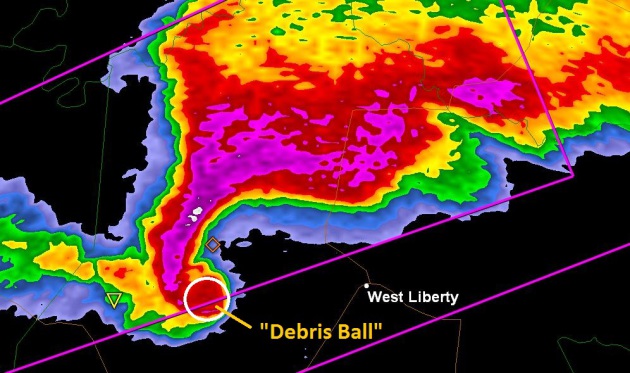
Severe Season Checklist
1). Multiple Safety Nets (e-mails and apps). Don’t rely on any one source of severe weather information. There are hundreds of apps that can transmit the latest (NOAA) warnings for your county. You should also invest in a $20-30 NOAA Weather Radio that will send the warning, even if the power goes out.
2). Doppler on your smartphone. My favorite is RadarScope, although our new app, Aeris Pulse, is powerful as well, more of a general interest weather app with extensive mapping capabilities.
3). Don’t rely on outdoor sirens. They were designed for outdoor use only. If you depend on the sirens you’re setting yourself up for trouble.
4). Football/bike helmets can avoid injury! It sounds crazy but many people have avoided head injuries by putting on helmets before seeking shelter in a basement or small, windowless room on the ground floor. The greatest source of tornado death and injury is blunt head trauma. A helmet can help lower the odds.
5). Tornado drills for your family. Much like a mock fire drill you should consider a tornado drill, so your kids know exactly where to go and what to do if it was the real thing.

Lightning Myths. Here are a few popular misconceptions about lightning risk, courtesy of NOAA, which adds: “Lightning strikes the United States about 25 million times a year. Although most lightning occurs in the summer, people can be struck at any time of year. Lightning kills an average of 51 people in the United States each year, and hundreds more are severely injured…”
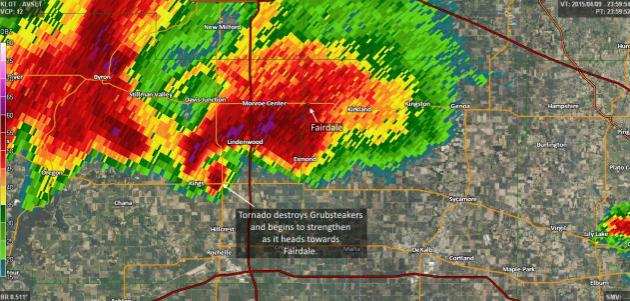
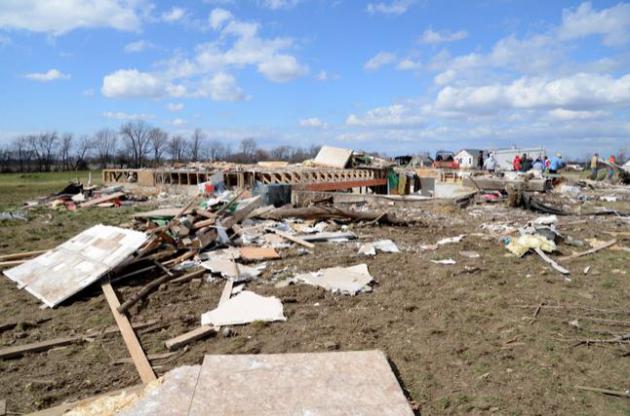
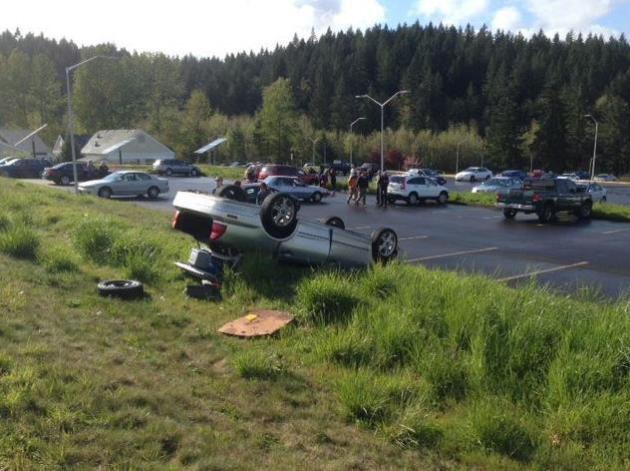

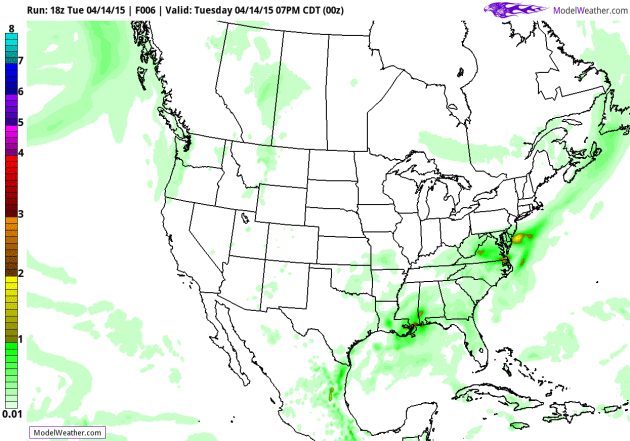


California’s History of Drought Repeats. The New York Times has the story – here’s a link and excerpt: “…The drought, now in its fourth year, is by many measures the worst since the state began keeping records of temperature and precipitation in the 1800s. And with a population now close to 39 million and a thirsty, $50 billion agricultural industry, California has been affected more by this drought than by any previous one. But scientists say that in the more ancient past, California and the Southwest occasionally had even worse droughts — so-called megadroughts — that lasted decades...”
* The latest U.S. Drought Monitor is here.

Beyond Almonds: A Rogue’s Gallery of Guzzlers in California’s Drought. Almonds take up nearly 10% of California’s water supply, but there are other offenders, as pointed out in this story at NPR. Here’s an excerpt: “…If you look at this presentation by Blaine Hanson, an irrigation expert also of UC-Davis, one thing jumps out. The agricultural product that truly dominates water use in California isn’t almonds. It’s alfalfa, plus “other forages,” such as irrigated pasture and corn that’s chopped into a cattle feed called silage. These forage crops consume more water per acre than almonds, and they also cover nearly twice as much land. And where do those products go? Primarily, they feed California’s enormous (though shrinking) herd of milk-producing cows...” (Illustration above: Leif Parsons for NPR ).

Warm Weather No Longer Top Retirement Priority. Hmm. It is for some, but a little balance is in order. Access to reliable water supplies should be at the top of the list too. Here’s the intro to a story at Fox Business: “Don’t let warm weather be the deciding factor in where to spend your golden years. Although a warm weather state, Arkansas was found to be the worst state for retirement based on Bankrate.com’s recent study. Years ago one of the most important considerations in choosing where to relocate in retirement was climate. Today, primary concerns are the cost of living and access to affordable health-care…”

KILSWITCH Android Tablet Delivers Airstrikes In Four Minutes. Yes, there’s even an app for THAT. Here’s a clip from a story at Engadget: “For years, American Joint Terminal Attack Controllers (JTACs) have been forced to call in their Close Air Support (aka airstrike) requests using radios and paper maps, then wait half an hour or more for help to arrive. During that waiting period, the JTAC would also have to carefully coordinate with and monitor the positions of inbound aircrews in order to avoid friendly fire. However, doing so is far easier said than done when you’re in the middle of a firefight…”

Study: Plucking Hair Can Help Treat Baldness. Counterintuitive? Absolutely. Does it work? No idea. It works on mice – good enough for me. Here’s an excerpt from CBS Sacramento: “If you’re bald the quickest way to a full head of hair could be getting rid of the remaining follicles. It may seem counterintuitive, but plucking your hair could actually lead to hair growth, according to Medical News Today. New research from the University of Southern California has shown that plucking 200 hairs from the back of a mouse in a specific pattern led to the growth of up to 1,300 hairs in their place…” (File photo: ThinkStock).



TODAY: Partly sunny, breezy, still pleasant. Winds: SE 10-20. High: 67
WEDNESDAY NIGHT: Partly cloudy, not as cool. Low: 49
THURSDAY: More clouds, probably dry. High: 66
FRIDAY: Sunny intervals, no complaints. Wake-up: 51. High: 70
SATURDAY: Nicer day, fading sun, lukewarm. Wake-up: 50. High: 72
SUNDAY: Steadier, heavier rain possible. Wake-up: 49. High: 55
MONDAY: Mostly cloudy, cool breeze. Wake-up: 40. High: 51
TUESDAY: More clouds than sun. Wake-up: 38. High: 56
Climate Stories…
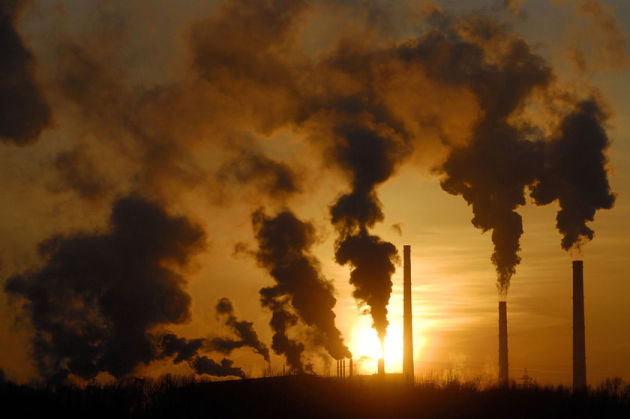
The U.S. Will Soon No Longer Be The Leading Cause of Modern Global Warming. ThinkProgress has the story – here’s the introduction: “China is set to overtake the United States as the leading cause of modern global warming at some point within the next two years, a dangerous benchmark for a country that’s also aiming to curb its dependence on coal. China is already the top emitter of greenhouse gases, having surpassed the United States in 2006, but two separate estimates now indicate that its cumulative emissions since 1990 are on pace to exceed those of the United States, which would make China the largest contributor to modern climate change…”
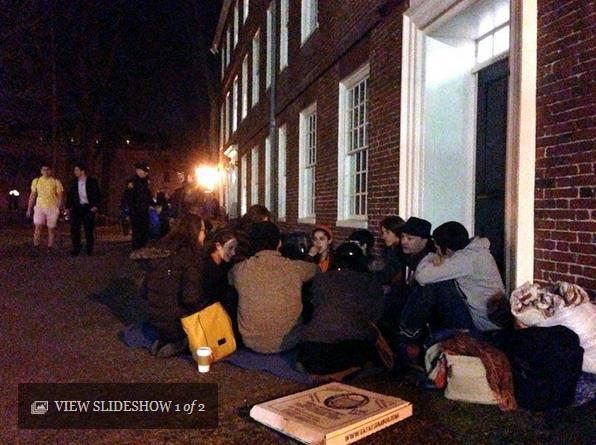
Demanding Divestment of Fossil Fuel Investments, Protesters Block Harvard President’s Office. Here’s an excerpt from WGBH News in Boston: “Students and climate change activists will gather in Harvard Yard in Cambridge all this week, demanding that nation’s oldest — and the world’s wealthiest — university drop its stocks in fossil fuel companies. Hundreds of alumni and dozens of students say they’re willing to be arrested. Beginning Sunday night, the student-led group Divest Harvard is planning to block Massachusetts Hall, preventing President Drew Faust from entering her office. Organizers say they won’t move until Faust commits to divest the university’s $36-billion-dollar endowment from top fossil fuel companies, such as Exxon Mobil, and Chevron...”
Photo credit above: “Students protest outside the president’s office Sunday night at Harvard University.” Kirk Carapezza WGBH News.

Have We Passed The Point Of No Return on Climate Change? Here’s an excerpt of an answer at Scientific American: “…Most climatologists agree that, while the warming to date is already causing environmental problems, another 0.4 degree Fahrenheit rise in temperature, representing a global average atmospheric concentration of carbon dioxide (CO2) of 450 parts per million (ppm), could set in motion unprecedented changes in global climate and a significant increase in the severity of natural disasters—and as such could represent the dreaded point of no return…”
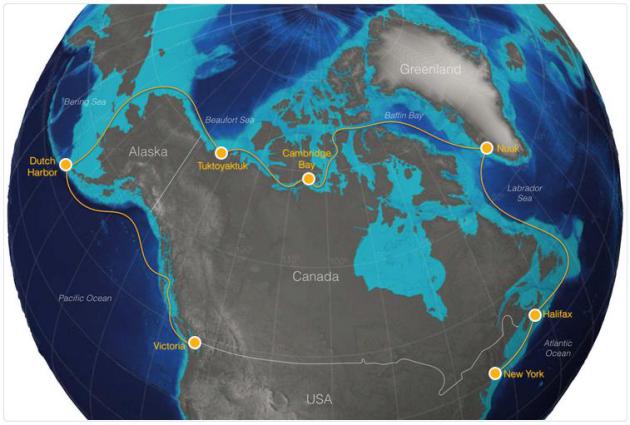
Climate Change Has Made A Sailboat Race Through The Arctic Possible. Quartz reports; here’s the intro: “A sailing race across the icebound Northwest Passage is being planned for 2017, through a route the organizers say has been made possible by climate change. The Sail the Arctic Race will involve teams setting sail from New York for a 7,700-mile journey to Victoria, British Columbia. They will race for six legs with stopovers in cities in the US, Canada, and Greenland. The route used to be unnavigable because of pack ice, which may well still be problematic for the race participants. But in the years since 1998 there has been less ice, with more below-average than above-average years, and more open water, Environment Canada told CBC News…”


Right-Wing Groups Get Overheated On Climate Questions. Here’s an excerpt of an Op-Ed at Huffington Post from Senator Sheldon Whitehouse: “…It is ironic that industries whose front groups accuse us of bullying are themselves pouring hundreds of millions of dollars into elections, for the plainly avowed purpose of threatening and punishing elected officials who dare to cross them and acknowledge the dangers of carbon-driven climate change. Americans for Prosperity, a Koch brothers venture, has said that Republicans who support action on climate change will be put at a “severe disadvantage” in the 2016 elections — no small threat, given the Koch brothers’ subsequent pledge to spend $900 million in that election cycle…”

JFK Profile In Courage Award Going To Former GOP Rep. Bob Inglis. I had a chance to spend some time with Rep. Inglis when he was in St. Paul a few weeks ago for the big WOW Gale (Wind on the Wires), underscoring the amazing advances in renewable wind energy in Minnesota and the Upper Midwest. He’s the real deal and it took great courage to stand up for his convictions, and the science. Here’s a clip from a story at NPR: “… Today, the John F. Kennedy Library Foundation named Inglis the 2015 recipient of the John F. Kennedy Profile in Courage Award for political courage. The foundation said in a statement: “Inglis is being awarded this honor for the courage he demonstrated when reversing his position on climate change after extensive briefings with scientists, and discussions with his children, about the impact of atmospheric warming on our future. “Knowing the potential consequences to his political career, Inglis nevertheless called on the United States to meaningfully address the issue. In June, 2010, Inglis lost his re-election to the U.S. Congress.”

Minnesota Energy Policy Revision Brings In Political Division. The Market Business dives into the growing controversey surrounding Minnesota’s renewable energy policy; here’s an excerpt: “…Critics say Garofalo’s package would undercut the mandate that investor-owned utilities get 1.5 percent of their power from solar, end rooftop solar rebate programs, including one for Minnesota-made panels, and repeal mandatory conservation programs by electric and natural gas utilities in 2016. “If any large part of this were to become law, it would be going backward, not forward,” said Michael Noble, executive director of Fresh Energy, a St. Paul-based nonprofit that helped draft the 2013 state law that has triggered increased investment in solar power across the state…” (Image credit: Fresh Energy).
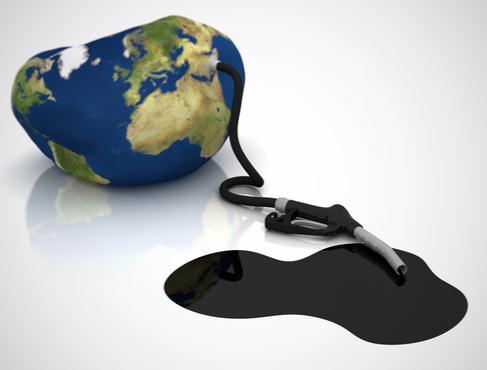
The Rockefellers Offload Oil and Take on Clean Energy (Paywall). Here’s the intro to a story at Barron’s: “The Rockefeller Brothers Fund—the $866 million-asset foundation started in 1940 by John D. Rockefeller Jr.’s five sons—announced in September that the family would divest itself of all their coal, tar-sands, and fossil-fuel investments held in the fund’s endowment. The eight Rockefeller family trustees on the board decided the fund needed “to better align its endowed assets with its mission” of combating climate change. The irony of Standard Oil’s heirs shedding fossil fuels wasn’t lost on the media…”


